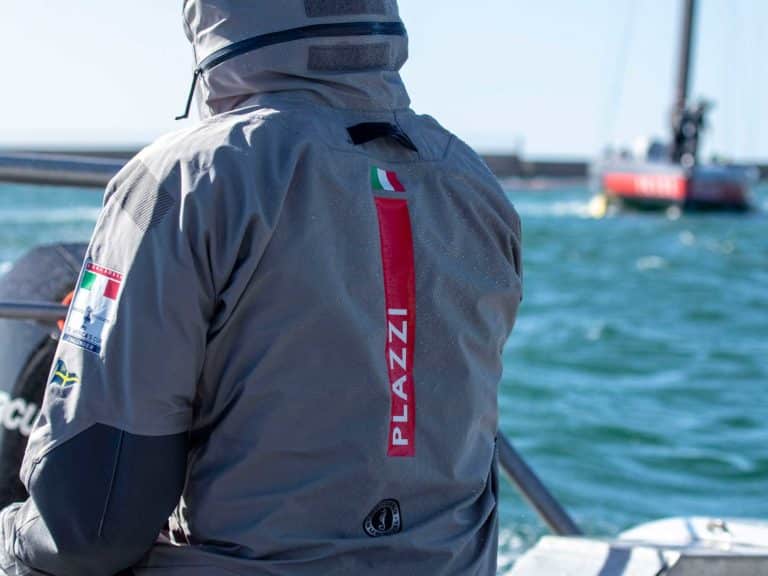
Mustang Survival + Luna Rossa Prada Pirelli Team
On the Water with Luna Rossa Prada Pirelli Team and Mustang Survival Guaranteed protection against the elements Advertisement Professional sailors don’t have time to think
For the longtime Italian Challengers, this sixth attempt to win the America’s Cup has a sense of urgency: to win it before the red moon sets.
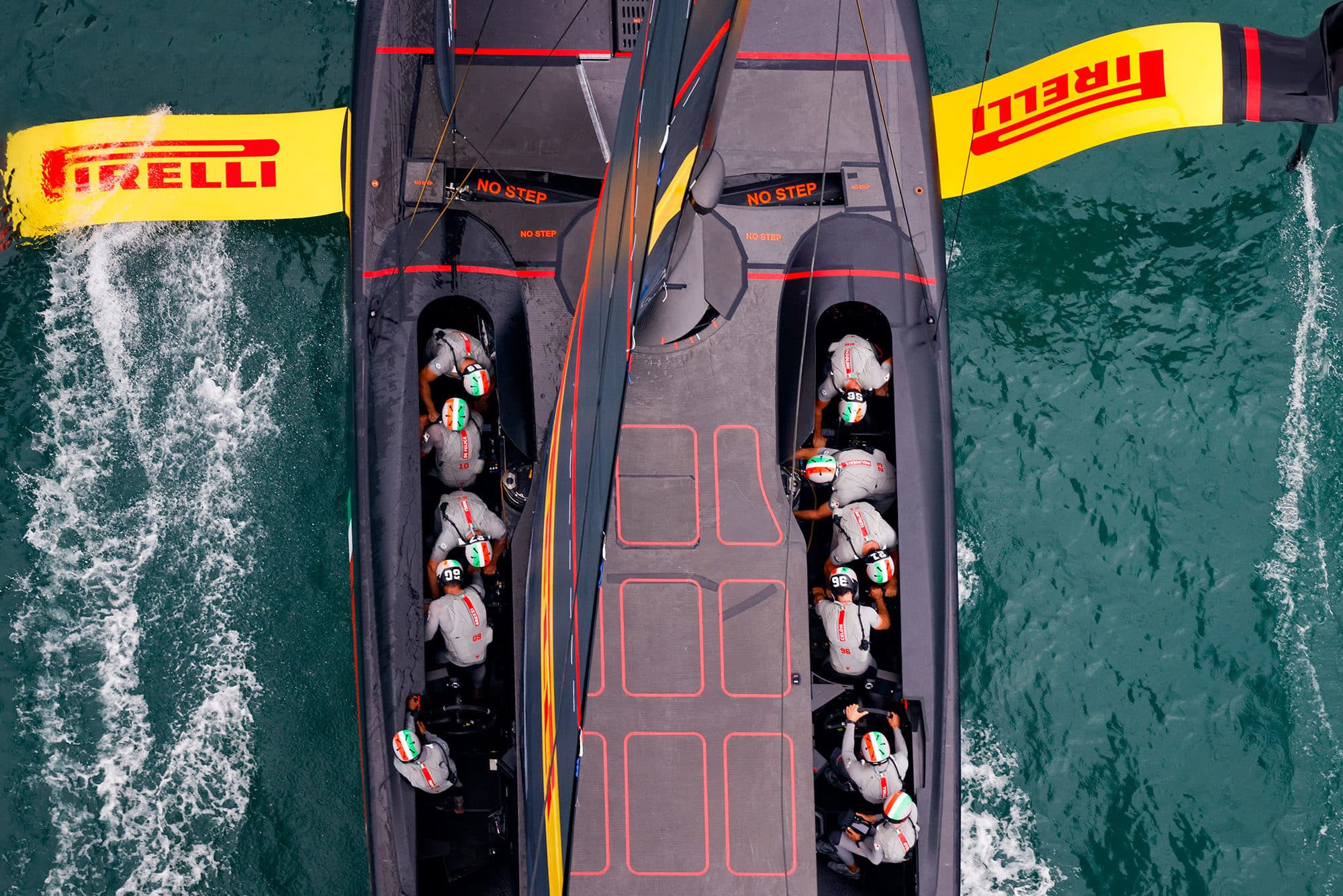
Representing: Circolo della Vela Sicilia
Principle(s): Patrizio Bertelli
Base: Cagliari, Italy
Helmsman: Jimmy Spithill
Yacht name: Boat 2
When Emirates Team New Zealand won the 35th America’s Cup on Bermuda’s Great Sound in 2017, Patrizio Bertelli, chief executive officer of the Prada Group, was waiting in the wings, challenge letter in hand. As the New Zealand sailors showered themselves in Moet & Chandon, Bertelli’s challenge was happily accepted, and so began the Cup’s current chapter.
Bertelli doesn’t hide his obsession with winning the darn thing. He has tried five times since the team launched in 1997 and knows well the investment, both financial and personal. “There is no such thing as a cheap America’s Cup,” Bertarelli has said, acknowledging budgets now run between 60 to 80 million euros, and likely more, depending on whom you ask.
Still, he’s all in. Again.
Luna Rossa Prada Pirelli Team Director and Skipper, Max Sirena, has been in the game long enough, with six appearances, that he wants his win, too. He’s not getting any younger, so a large focus of team recruiting was for the youngest, hungriest and talented Italian sailors they could find. The notable exception in the locker room, of course, is skipper Jimmy Spithill, twice a winning helmsman of the Cup with Oracle Team USA.
“I want to make sure it’s clear for everyone, especially for the new guys,” Sirena said at the outset of the challenge. “This Cup is not an attempt. This cup is not a rehearsal for future races. This Cup is not three years from now. This Cup will be won in the now…This cup will be our everything, our day, our night…”
Based in Cagliari, Italy, and as Challenger of Record, they had a hand in the design and development of the AC75 Rule alongside the Defender. Team engineers were tasked with developing components of the foil-arm packages supplied to all teams—a consuming project at the outset, but one that eventually allowed all teams to fly their first boats and thereby prove the boat’s concept.
Meanwhile, onboard their own “surrogate boat,” Quick and Dirty, Luna Rossa’s sailors honed a new set of skills that would be applied to their first AC75, the first of the boats with a notable skeg running the length of its underbody. Breakages, and then the destruction of their first wing-sail package, presented the team with its first major hurdles, but reports from spies continued to relay the black boat was fast. Perhaps a bit unstable at times, but quick, nonetheless.
Then came the COVID-19 pandemic, which hit hard and early in Italy. With the country on lockdown, progress on the build of their second boat ground to a crawl, so the team hunkered down in Cagliari and focused on other ways to stay on track; racking up hours in the simulator and in the gym and on their own foiling water toys.
With the arrival of Fall, however, Boat 2 was on an Antonov cargo plane and set down in Auckland as the second team to deliver its assets to the stadium. They wasted no time getting into the work up and showing flashes of straight-line speed to those watching closely from the sidelines.
When asked if he ever comes home satisfied in the evening, Sirena’s response is clear: “Never.” There’s no sleep until the end.

On the Water with Luna Rossa Prada Pirelli Team and Mustang Survival Guaranteed protection against the elements Advertisement Professional sailors don’t have time to think
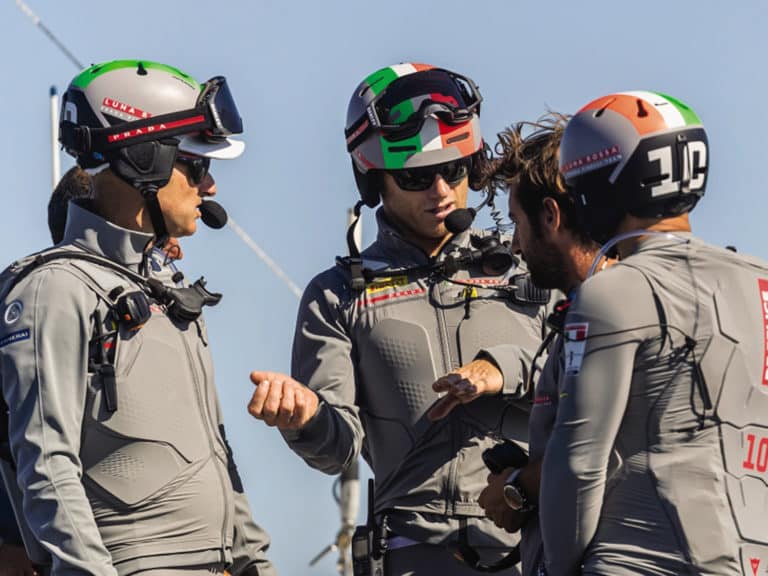
America’s Cup skipper Jimmy Spithill explains the freedom of his role inside the Italian Challenger of Record.
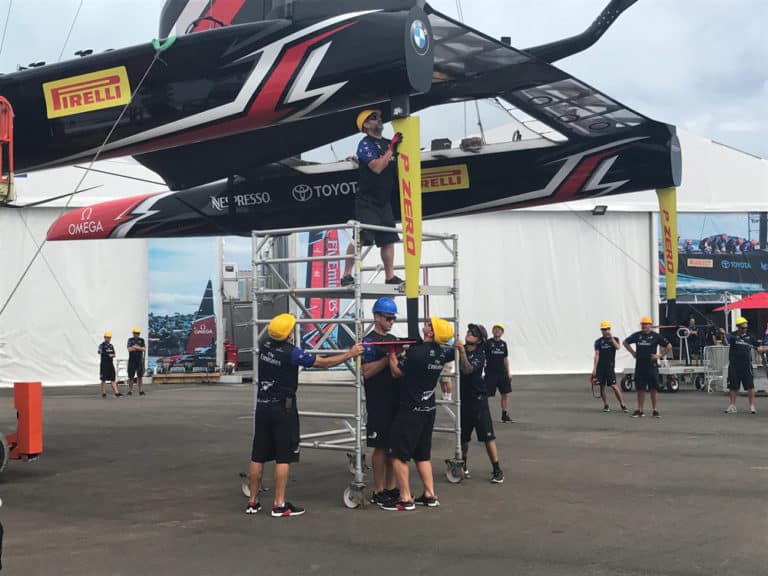
Former partner of the current America’s Cup defender allies with Italy’s Challenger of Record for the next edition.
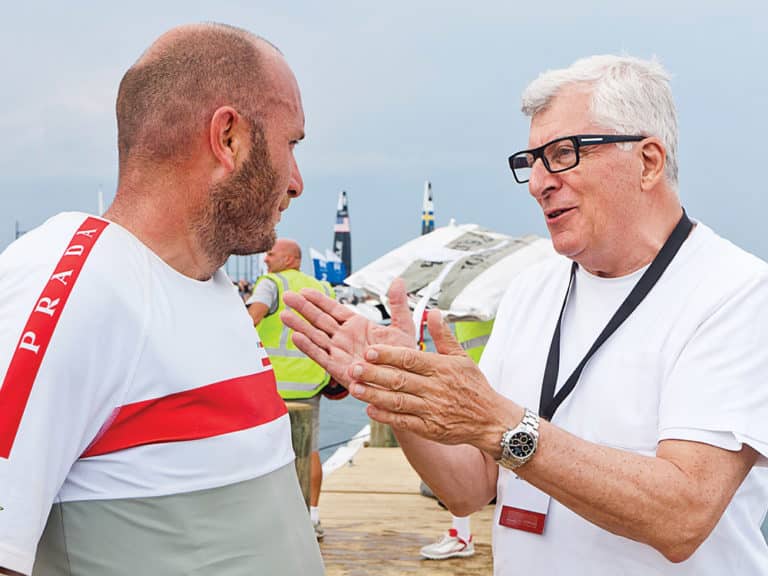
Pulling at the Purse Strings